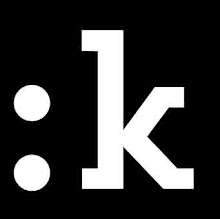The history of the fi’zi:k bum logo continues from a January blog entry.

Exact dates and the order of who did what first are mixed but such is to be expected given the numbers of bums that have served as a billboard for the fi’zi:k logo. When the idea of fi’zi:k bum logo was first created in our Italian offices, the suggestion was passed stateside. “Ask the teams,” Signor Fregonese encouraged, “the worst that can happen is that they say no.”
While fi’zi:k was no stranger to the pro peloton, having supporting the bums of the infamous GT-Lotto team, breaking in to the pack in both Europe and the US was no easy feat. Two of our main Italian competitors had long established themselves as the saddle brand of choice and fi’zi:k was the new kid on the block. When we first begin approaching US based pro road teams in 2001 for sponsorship talks, our product offerings were limited and established pro team-saddle relationships were likened to family. You don’t expunge the family. The most difficult part however, was convincing the team directors – most of them former pros who’d grown up on our competitor’s brands - to try something new. In the US at that time, it wasn’t so much about money, but it was about the product. “Why make my guys switch and what have you got to offer that’s better?" was the echoing sentiment.
The US first teams to ‘take a chance’ with fi’zi:k were Prime Alliance (2001- 2003), Navigators (2002-2006) and Shroeder Iron Pro (2002-2003). Each of these three teams hold a spot of significance in fi’zi:k history.
Prime Alliance was our first US pro road sponsorship and was the team that Jonathan Vaughters eventually joined in 2003 after leaving the European pro peloton. Vaughters was one of our forty secret Arione prototype testers long before the saddle went into production. Fi’zi:k’s relationship continues to this day with Vaughters and his Garmin-Slipstream team and in true full circle fashion, it was his rider, Dave Zabriskie, that was the first pro to test our new 2009 Ares team trial saddle. Prime Alliance along with Schroeder Iron Pro, was one of the first US teams to incorporate the fi’zi:k bum logo.


Navigators Insurance was our second US road sponsorship and was until recently, our longest running US sponsorship (Team Healthnet-Maxxis now Team OUCH currently ranks as fi’zi:k’s longest running professional US partnership).
Our partnership with Shroeder Iron Pro marked not only the first time our saddle sat under the bum of the US National Champion (Chann McCrae came over to Shroeder Iron Pro from US Postal after crossing the line as first American in 2002; fi’zi:k rider & Navigator;s Canadian Mark Walters won the US Pro Open that year) but also marked the first truly BIG US Pro bum logo!

These early sponsored teams were limited to the original Pave, the Poggio (a Gord Fraser favorite) and the Dolomite. Shroeder Iron Pro used the Dolomite almost exclusively. All three of these saddles, in their original form and design, are now out of production.














































